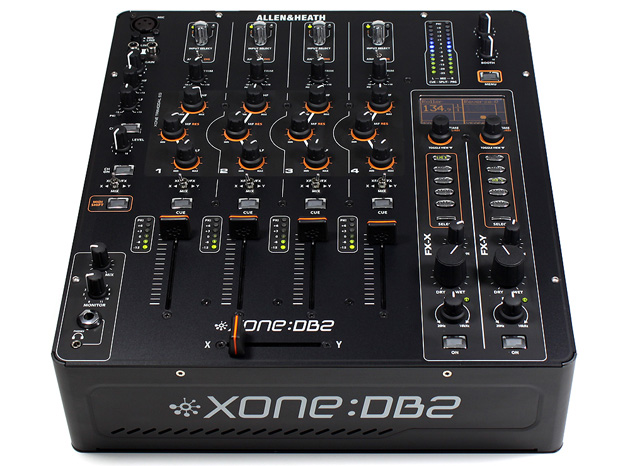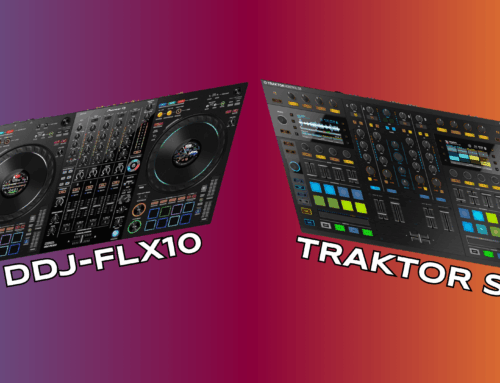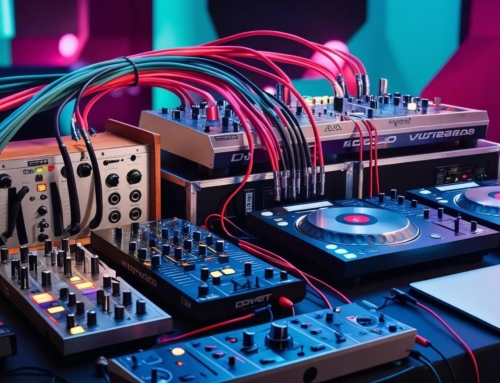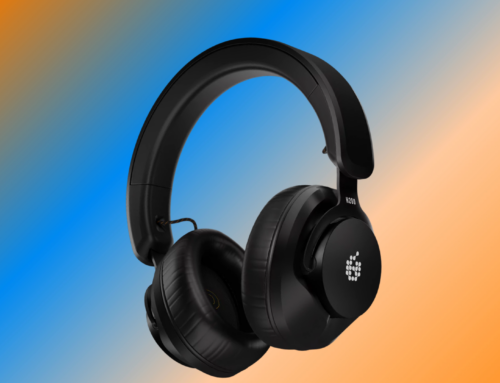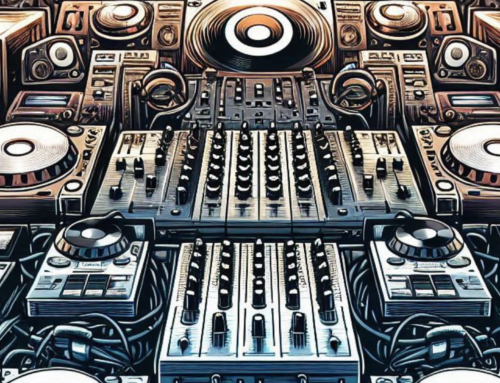The Allen & Heath Xone:DB2, designed to be a simplified and more affordable cousin to the premium Xone:DB4, is a high-quality four-channel mixer and sound card which bridges the gap between absolute luxury and entry-level options. The pseudo-minimalist design belies an impressive feature set which makes the DB2 a solid choice – which it ought to be, considering the lofty price point.
A quick inspection of the DB2’s chassis reveals impeccable quality of materials, build, and aesthetics. The mixer’s rounded edges give it a unique look, and the large knobs and bright colors make this mixer look more like a work of art than an electronic signal manipulator. Allen & Heath even includes a pack of spare knobs and faders – a nice touch and a friendly gesture, in my opinion.
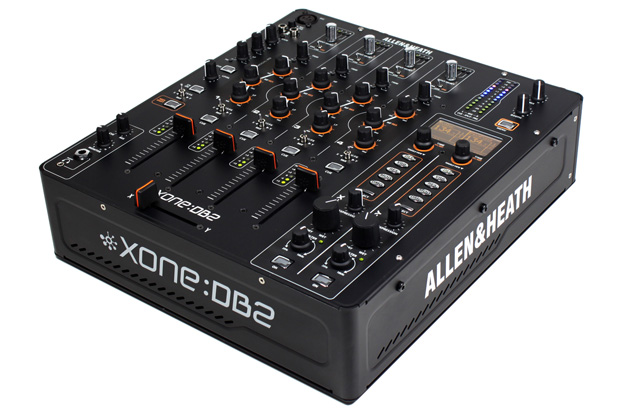
At first, I found the relative lack of crowding on the mixer’s face to be pleasing to the eye, but soon I grew concerned that a lack of controls meant a lack of features. Where, for example, can I find a knob to control the crossfader curve? Where are the EQ kills? As it turns out, what the mixer lacks in physical controls it more than makes up for in its highly complex but easily accessible menu. The menu contains curve controls not only for the crossfader but for the channel faders and EQ knobs as well, offering the possibility to even turn EQ knobs into filters. More advanced options, such as BPM detection range, are accessible as well.
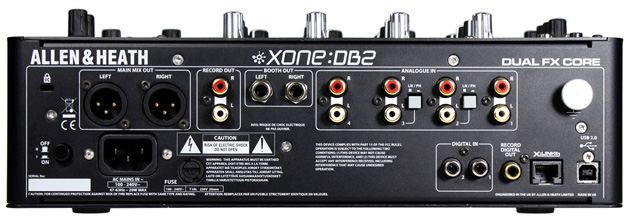
Also available via the Xone:DB2’s LCD screen are the mixer’s two built-in effects units. Though only five buttons are available on the mixer’s face, each of these corresponds to an entire robust group of effects, such as multiple reverbs, customizable audio modulations, delay units, and more. The sheer amount of effects is staggering, and the addition of a standalone filter to each effects unit is just icing on the cake. However, as impressive as these effects are (and they do sound fantastic), I was a little dissatisfied with the handling of effects routing. The effects units are each assigned to one side of the crossfader, rather than allowing for direct assignment to any one channel or to the master output. This means that if you want to throw on a certain effect, you are temporarily stuck to one side of the crossfader – a system that is less than ideal for beat juggling or quick transitions.
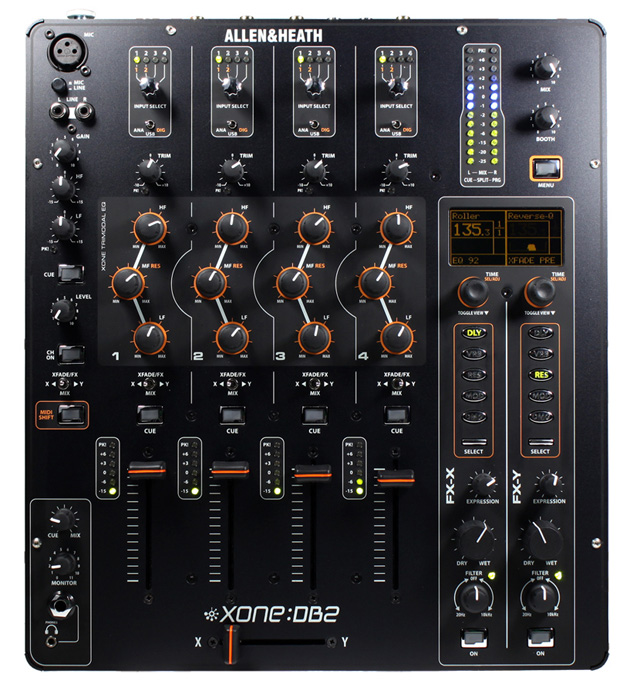
The Xone:DB2’s built-in soundcard is also impressive at 24 bits and 48kHz, and allows for a wide variety of channel combinations on the mixer – with analog, USB, and digital S/PDIF sources available in any combination via the input matrix selector knobs. Another helpful bit of connectivity is the inclusion of X:Link connectors allowing for communication with other Allen & Heath products such as the Xone:K2. This eliminates the need for more than one USB port, and can be a great asset to A&H-loyal DJs.
In form, design, and sound quality, it’s hard to match the virtues of the Allen & Heath Xone:DB2. The effects, while potentially tricky to assign properly (there are, to be fair, many workarounds), are simply stellar and more than satisfying, and the filters are truly top notch (no pun intended). With its luxury price point, much is expected from the Xone:DB2, and luckily in this case Allen & Heath is more than able to deliver.
